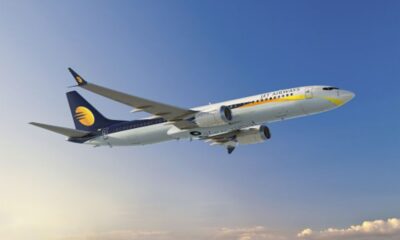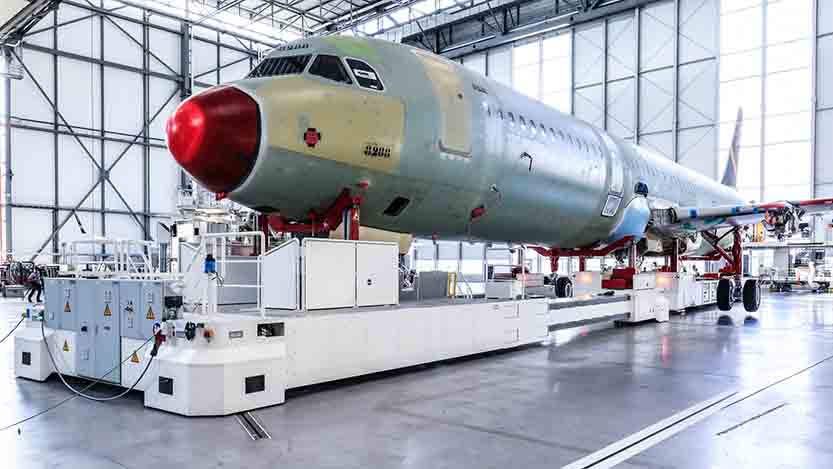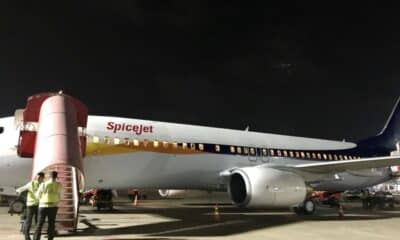Aviation
Banks slowing down Jet airways takeover. Why Indian banks unsupportive to Aviation Industry ?
Because of lender clearances, takeoff for the jet aircraft was hampered by strong winds

Due to severe financial debts and poor management, jetairways, one of the most iconic airlines in the Indian aviation industry, stopped operations in 2019. Now The winning bidder for the troubled Jet Airways is a group led by Murari Lal Jalan and Florian Fritsch of Kalrock Capital. The creditor’s committee of Jet Airways, which was slated to establish the airline in 2022, approved their bid with a vote total of almost 99 percent. however, it will now be forced to begin in the next year due to the banks’ intervention.
Building a firm is difficult, but as it develops into an international brand, it can go on to increase employment in the nation and boost the economy. Banks must act quickly in all of these situations to support the businesses operating them.
Due to current operations and new marketing concepts that would require three more months to set up all full services, Jetairways’ new owner JKC has been eagerly awaiting the takeover and has begun setting up all plans and operations. However, because of lender clearances, takeoff for the jet aircraft was hampered by strong winds.
Banks are the foundation of any business and play important roles in the economy. Indian banks need to take a lot of lessons from other nations. and move swiftly without hindrances free for corporations. Kingfisher Airlines is one of the companies that lost market share as a result of a banking problem after trying to settle the money with a number of sources but was refused permission to do so by the banks.
Banks are currently having issues with Jet Airways 2 because despite having planned and obtained its certification for operations, it has still not been given to the operators. According to JKC, they also submitted all the necessary paperwork and written correspondence with the lender banks, who have since refused to take an active role in the project’s operations.
According to the most recent information, the corporation has sent certain employees who were hired for operations on leave with lower pay simply due to the delay of the operations. Due to the uncertainty surrounding the start of operations, Jet Airways, which has not yet resumed operations under its new owner, would lower salaries for a variety of staff members and place a large number of employees on unpaid leave.
According to the most recent information, the airline intends to operate with eight fleets, with Bengaluru, Delhi, and Mumbai serving as its hubs. Even though JKC has contributed revenue for operations, the process has been halted due to unresolved bank issues.
The corporation plans to start up again in early 2022. It successfully conducted a test flight on May 5, 2022, the organization’s 29th anniversary of founding, which was necessary to obtain an Air Operators Permit (AOP).
On May 15, 2022, Jet Airways conducted it’s first three proving flights between Delhi and Mumbai, Mumbai and Ahmedabad, and Ahmedabad and Delhi. Jet Airways carried out the final proving flight on May 17, 2022. On June 22, 2021, the NCLT subsequently approved the resolution put forth by the Kalrock-Jalan consortium. In an oral order, the NCLT gave the Ministry of Civil Aviation and the Directorate General of Civil Aviation 90 days to give Jet Airways access to airport slots.
The glorious past
Launched in 1993, Jet Airways grew to become synonymous with premium air travel for discerning travelers in India. It eventually flew to over 65 destinations in India and across the world, including Europe, the Middle East, Southeast Asia, and North America, with hubs in Mumbai, Delhi, Bengaluru, and gateways in Amsterdam, Paris, London, and Abu Dhabi. It flew 124 narrow-body and wide-body aircraft on nearly 1000 domestic and international routes before it suspended operations in April 2019.

Aviation
JetBlue & Etihad Airways Join Forces for Loyalty Partnership under Codeshare Agreement
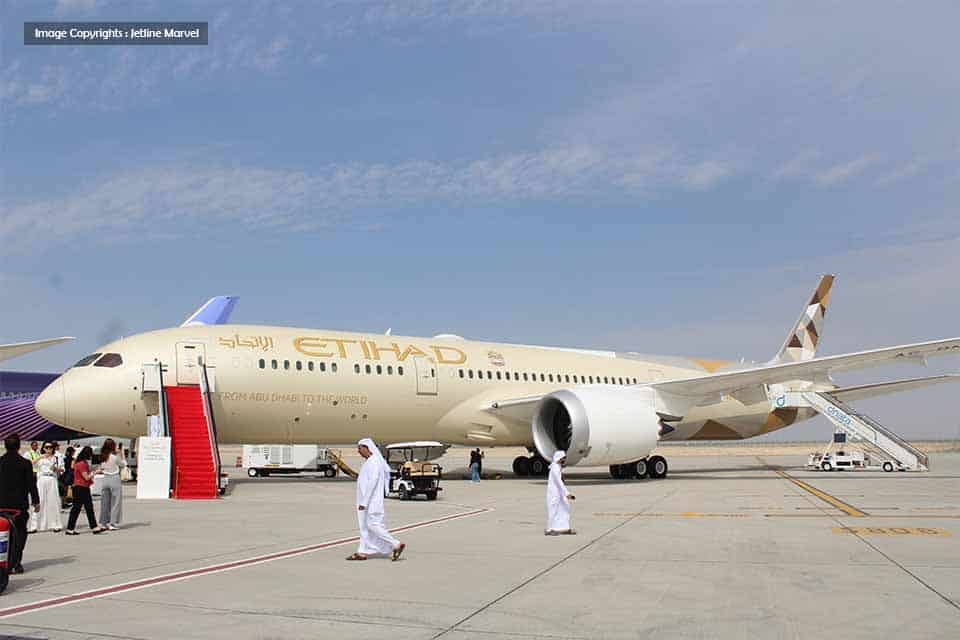
A long-standing codeshare collaboration between JetBlue New York’s Hometown Airline® and Etihad Airways, the national airline of the United Arab Emirates, has expanded to include loyalty benefits beginning on May 8, 2024.
Celebrated today at Dubai’s Arabian Travel Market was the agreement between the two airlines. As a result of the partnership, passengers travelling across the networks of both airlines will now be able to accrue and redeem points in their preferred programme while they are part of JetBlue’s TrueBlue and Etihad Airways’ Etihad Guest.
With Etihad Guest miles redeemable against a variety of experiences, including travel and lodging across the globe as well as the ability to convert miles into reward cards for retail purchases, this alliance enhances the redemption choices offered by the individual programmes.
In addition, JetBlue introduced its new TrueBlue loyalty programme last year, giving members more value than ever before with expanded Mosaic levels for the airline’s most devoted customers, Perks You Pick®, tiles to track status, and more opportunities than ever before to earn perks and status.
TrueBlue recognises that every traveller is unique, thus it allows users to select the benefits that are most important to them and accrue points for every flight, purchase, drive, or shop.
The customer reward programmes expand on the nearly ten-year cooperation between the two airlines, which provides connectivity between New York and Boston to over 70 locations worldwide on Etihad and over 40 destinations in the Americas on JetBlue.
Aviation
Emirates Unveils Plans to Retrofit 191 Aircraft, Including Boeing 777 Upgrade
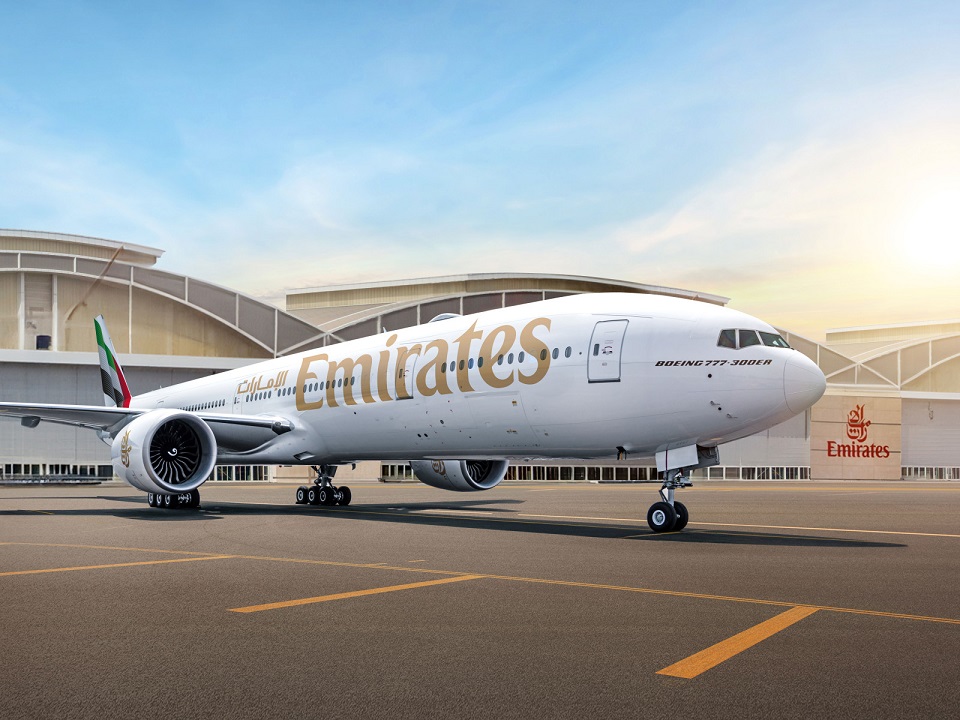
Emirates announced today an ambitious expansion of its aircraft refurbishment program, signaling its commitment to providing an unparalleled travel experience for its customers.
The initiative now includes refurbishing an additional 43 A380s and 28 Boeing 777s, bringing the total number of aircraft undergoing full refurbishment to 191.
Originally slated for 120 aircraft, comprising 67 A380s and 53 777s, the program’s extension reflects Emirates’ dedication to maintaining the excellence of its fleet. The Boeing 777 remains the backbone of the Emirates fleet, while the A380 continues to be a customer favorite, serving as the airline’s flagship.
Emirates has already retrofitted 22 A380s, with plans to commence the interior refresh of the first Boeing 777 in July. Each Boeing 777 will undergo approximately two weeks of refurbishment before re-entering service. Notable upgrades include a refreshed First-Class cabin, new Business Class seats featuring an updated 1-2-1 seating configuration, and the introduction of 24 Premium Economy seats, expanding premium options for travelers.
With the addition of the Premium Economy cabin, Emirates’ Boeing 777 will feature 332 seats across four classes: eight First Class suites, 40 Business Class seats, 24 Premium Economy seats, and 260 Economy Class seats. To accommodate the new Premium Economy cabin, 50 Economy seats will be removed.
Emirates’ in-house Engineering Centre is managing and executing the refurbishment work for its fleet, with over 250 project personnel working tirelessly, supported by 31 major partners and suppliers. These partners have established workshops both onsite and offsite to deliver the refreshed cabins efficiently.
Upon completion of the retrofit program, Emirates will have installed 8,104 next-generation Premium Economy seats, 1,894 refreshed First Class suites, 11,182 upgraded Business Class seats, and 21,814 Economy Class seats across its fleet.
Emirates currently operates refurbished A380 aircraft with Premium Economy on various routes, including to destinations such as New York JFK, Los Angeles, London Heathrow, Sydney, and Dubai. The airline plans to expand services with the new cabin to Osaka in early June.
By February 2025, Emirates aims to offer Premium Economy services to 42 cities, with the introduction of the A350 to its fleet in September and the refurbished Boeing 777s set to serve more cities with the highly sought-after cabin later in the summer.
Aviation
Ranking the 7 Most Powerful Fighter Jets of 2024

Fighter jets stand as indispensable assets in a nation’s defense arsenal, defined by their cutting-edge aircraft designs, formidable engine power, and formidable weaponry. Several countries boast top-tier fighter jets primed for various combat scenarios.
In this article, we’ll delve into the realm of aviation to explore seven of the most formidable fighter jets ever constructed.
The F-22 Raptor is the most powerful fighter aircraft in the world. The fifth-generation aircraft stands as a pinnacle of aviation engineering. Its near-invisibility to radars, coupled with a potent arsenal, makes it the epitome of cutting-edge technology. As the most advanced and costly production fighter aircraft in history, much of its sensors and avionics remain shrouded in secrecy, highlighting its exceptional status. Adopted in 2003, the F-22 was reserved solely for the United States, underscoring its exclusivity.
The F-22’s avionics suite is another key element of its superiority. Equipped with state-of-the-art sensors, radar systems, and electronic warfare capabilities, the F-22 can detect and track multiple targets simultaneously, providing its pilot with unmatched situational awareness.
The F-22 Raptor, a single-seat fighter jet, boasts impressive specifications: it measures 62 feet, 1 inch in length, has a wingspan of 44 feet, 6 inches, and stands at 16 feet, 8 inches tall, with an empty weight of 43,340 pounds and a maximum takeoff weight of 83,500 pounds. Its maximum speed exceeds Mach 2.25, while it can cruise at around Mach 1.82, with a combat radius of over 500 miles and a ferry range surpassing 1,800 miles. Powered by two Pratt & Whitney F119-PW-100 turbofan engines, each generating approximately 35,000 pounds of thrust, the F-22 is armed with an M61A2 20mm Gatling gun and can carry up to 8,000 pounds of ordnance on its four under-wing pylons and two internal bays. Lockheed Martin F-22 Raptor carries a price of $143 million per unit.
Lockheed Martin F-35 (USA)
The F-35 stands out as one of the most versatile aircraft in the realm of fighter jets, offering three distinct versions tailored to meet diverse user requirements. Among its variants, the vertical takeoff and landing (VTOL) version shines as one of the most advanced, albeit slightly pricier. This aircraft boasts cutting-edge avionics, engines, and radar systems, rendering it highly stealthy and adept at swiftly navigating hostile territories.
With dimensions of approximately measures 51 feet in length, 35 feet in wingspan, and 14 feet in height, the F-35 holds a maximum takeoff weight of approximately 70,000 pounds. Propelled by Pratt & Whitney’s F135 engine in the F-35A variant, it also features advanced stealth capabilities, complemented by internal and external hardpoints for mounting a variety of armaments.
The F-35 Lightning II, a fifth-generation stealth fighter jet, stands as a pinnacle of modern military aviation. Developed by Lockheed Martin, it serves multiple roles across the U.S. Air Force, Navy, and Marine Corps, as well as numerous allied nations. With its advanced avionics, sensor fusion capabilities, and stealth technology, the F-35 boasts unprecedented situational awareness and survivability. Its versatility allows it to excel in air-to-air combat, ground attack missions, and reconnaissance. Despite controversies surrounding its cost and development delays, the F-35 remains a vital component of many nations’ defense strategies, reshaping the landscape of aerial warfare. The F35, priced at around $177 million per unit, holds the distinction of being the most expensive aircraft.
Sukhoi Su-57 (Russia)
The Sukhoi Su-57, Russia’s fifth-generation stealth fighter. Its advanced radar system enables it to detect and track multiple targets simultaneously, while its supermaneuverability allows for unmatched agility in dogfights. Additionally, its low observable design reduces radar cross-section, enhancing survivability in contested airspace. Equipped with state-of-the-art electronic warfare systems, the Su-57 possesses a robust defensive capability against modern threats.
Su 57 Powered by two Saturn AL-41F1 afterburning turbofans, the aircraft produces 88.3 kN of thrust dry, 142.2 kN with afterburner. The Su-57 have a top speed of around Mach 2 (2,485 km/h or 1,547 mph) and a maximum range of around 3,500 km (2,175 miles). The estimated unit cost of the Su-57 is approximately $40-50 million USD per aircraft.
Chengdu J-20 (China)
The Chengdu J-20, also known as the “Mighty Dragon,” stands as a twinjet, all-weather stealth fifth-generation fighter aircraft. Among its array of advanced features, the J-20 incorporates a missile launch detector, complemented by a radar warning receiver boasting an impressive detection range of 460 kilometers.
In addition, it is equipped with flare countermeasures to thwart infrared-guided missiles. Powering this formidable aircraft are two Shenyang WS-10C afterburning turbofan engines, with dimensions measuring 21.2 meters in length, 13.01 meters in wingspan, and 4.69 meters in height. The J-20 can reach speeds of up to Mach 2.0 and attain a service ceiling of 20,000 meters (66,000 feet), solidifying its position as a cutting-edge asset in modern aerial warfare. The estimated cost of each J-20 is approximately $110 million USD.
Boeing F/A-18E/F Super Hornet (USA)
The Boeing F/A-18E/F Super Hornet represents a lineage of American supersonic twin-engine, multirole fighter aircraft. Renowned for its versatility across a spectrum of missions ranging from air superiority to ground attack, it holds a pivotal role in modern warfare.
Powered by two General Electric F414-400 turbofan engines, each boasting 13,000 lbf (58 kN) of dry thrust, the Super Hornet features dimensions with a length of 60 feet, a wingspan of 44 feet, and a height of 16 feet. Achieving a maximum speed of Mach 1.6, it exemplifies speed, agility, and adaptability, embodying a cornerstone of contemporary aerial combat capabilities. Super Hornet can cost up to $66.9 million per unit.
Eurofighter Typhoon
The Eurofighter Typhoon represents a collective endeavor within Europe, featuring a multinational, twin-engine, canard delta wing configuration designed for adaptable multirole functionalities. Its principal objective revolves around the disruption and management of enemy air defenses, underscoring its pivotal role on the electronic warfare front.
Propelled by 2 × Eurojet EJ200 afterburning turbofan engines, it boasts dimensions of 15.96 meters in length, a wingspan of 10.95 meters, and a height of 5.28 meters. Capable of reaching speeds of up to 2,125 km/h, its versatility and performance make it a formidable presence in contemporary aviation. The Eurofighter Typhoon comes with a price tag of $124 million per unit.
Dassault Rafale
The Dassault Rafale stands as one of the world’s premier and most formidable fighter aircraft. Hailing from France, Dassault’s Rafale has earned global renown for its exceptional versatility and unmatched performance. Armed with an array of cutting-edge weaponry and advanced radar systems, it boasts remarkable maneuverability and the capacity to carry a diverse range of precision-guided munitions.
Propelled by 2 × Snecma M88-4e turbofans generating 50.04 kN (11,250 lbf) thrust each, it measures 15.27 meters in length, with a wingspan of 10.90 meters and a height of 5.34 meters. With a maximum speed reaching 1,912 km/h, the Rafale epitomizes excellence in modern aerial combat capabilities. The cost of a Rafale ranges between $100 million and $120 million per unit in its most basic configuration.

